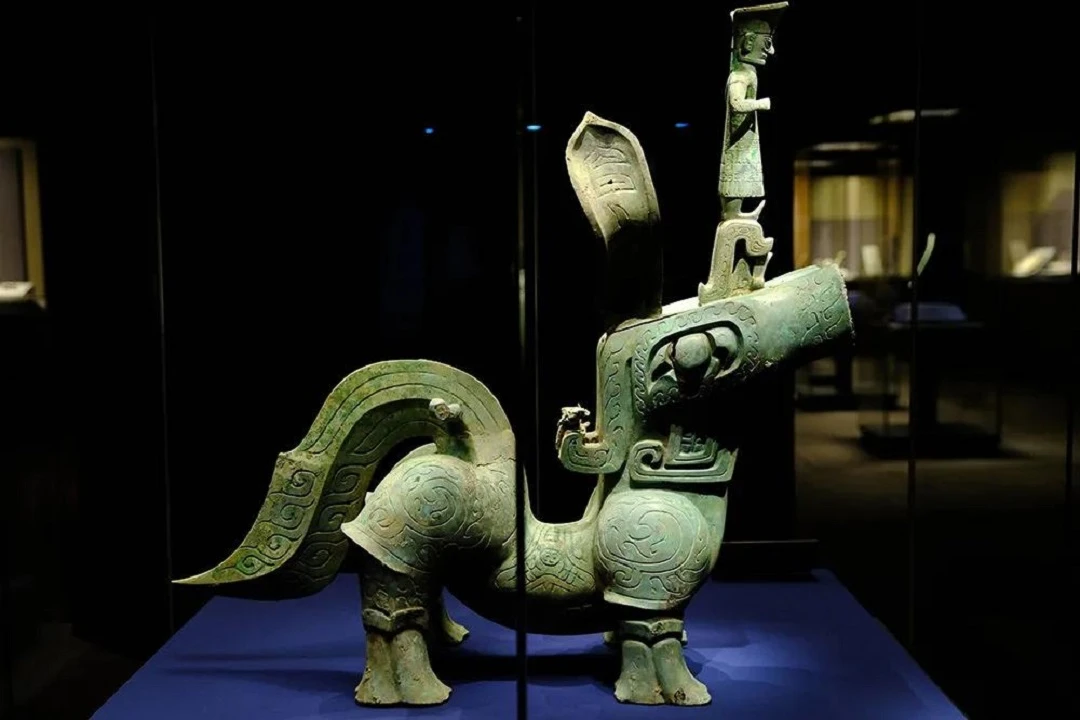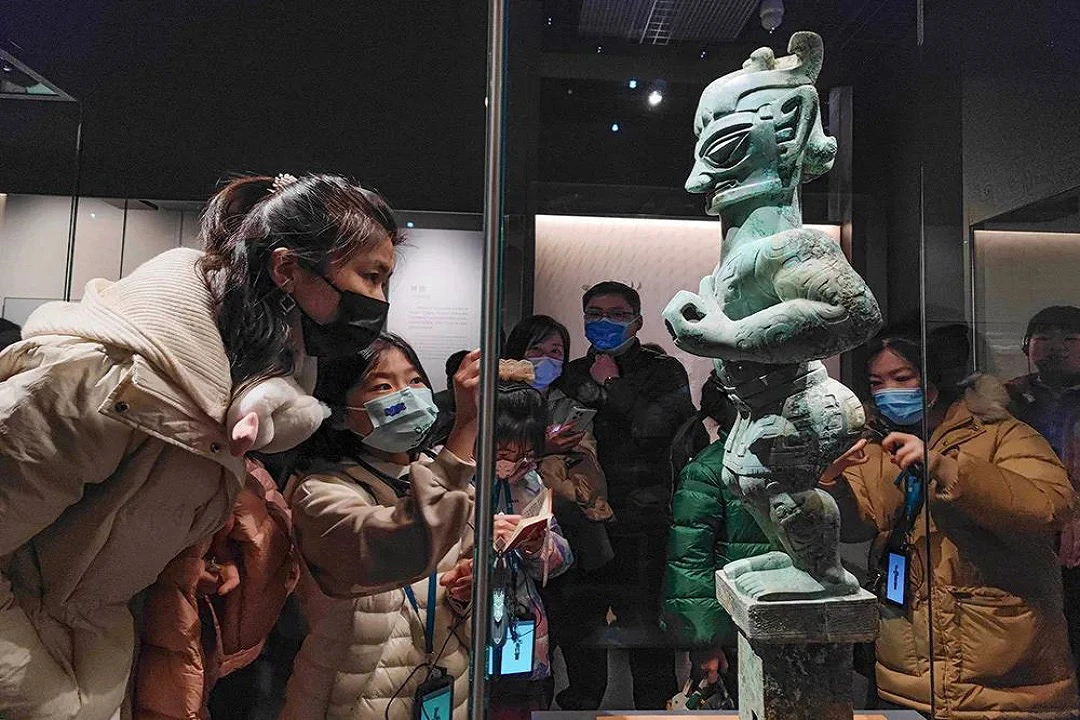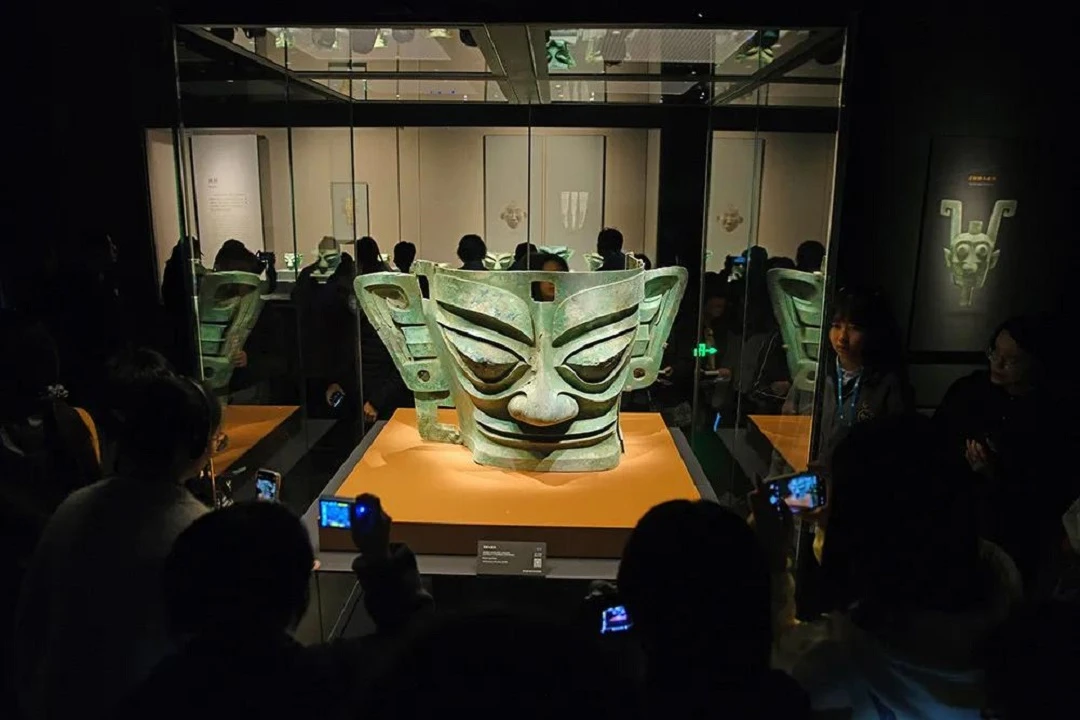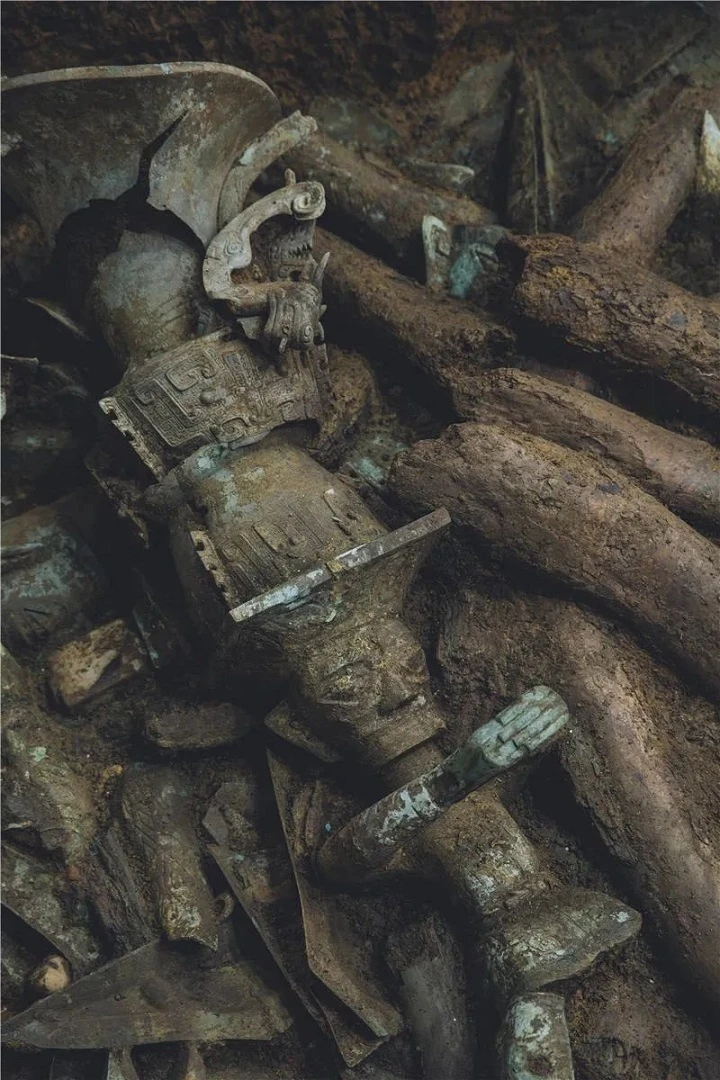Since its excavation in 1986, the Sanxingdui archaeological site has been a subject of ongoing debate and fascination, particularly regarding the nature of its pits—whether they served as sacrificial pits or for ceremonial objects. Recent excavations in 2021 further deepen our understanding, yet the full story of Sanxingdui's flourishing era remains shrouded in mystery.
Despite these enigmas, interest in the Sanxingdui excavations has not waned. At the Shanghai Museum, the "Star over China: Sanxingdui and Jinsha Ancient Shu Civilization (星耀中国:三星堆·金沙古蜀文明展)" held since February 2, 2023, has allowed visitors to explore a wide array of artifacts, including those from the newly discovered pits. The exhibition, curated by Hu Jialin, a research curator at the Shanghai Museum, features 363 artifacts, with 59 from Pits 1 and 2 and 151 from the newly excavated Pits 4 to 9.
The "Exploring Ancient Shu Civilization: Sanxingdui and Jinsha" opened at Beijing's Grand Canal Museum on June 27th, the exquisite bronzes unearthed in two excavations spanning nearly forty years continue to captivate enthusiasts eager to delve into the mysterious ancient Shu civilization. The ongoing exhibitions at the Beijing and Shanghai museums have further amplified public interest in the Sanxingdui civilization. The display of these newly excavated artifacts not only showcases the artistic achievements of the Sanxingdui people but also invites visitors to contemplate the cultural and historical significance of these ancient relics.

The Enigmatic Cross-Pit Bronze Assemblies
Nearly three years have passed since the latest round of high-profile Sanxingdui excavations, yet the site's allure remains undiminished. Archaeological efforts at the Sanxingdui site in Guanghan, Sichuan, began in 1934 and intensified over subsequent decades, culminating in the discovery of two monumental sacrificial pits in 1986. These pits yielded a treasure trove of peculiar bronze artifacts, including bronze trees, standing figures, and masks, alongside jade and ivory objects. The discovery of six new pits near these original finds towards the end of 2019 sparked renewed interest and excavations lasting until early November 2022. Each new find reignited public fascination, prompting deeper inquiries into the Shu civilization's late Shang period regional significance.
Following the July 28th, 2023 opening of the Sanxingdui Museum's new wing, the Shanghai Museum's February 2nd exhibition brought fresh opportunities to reevaluate Sanxingdui. According to Hu Jialin, curator and researcher at the Shanghai Museum, the exhibition featured artifacts from seven pits, excluding the less well-endowed Pit 6. Highlights included 59 items from Pits 1 and 2 and 151 from the newly discovered pits, comprising nearly half of the exhibition's total 363 artifacts.
Shanghai Museum, renowned for its bronze collection and restoration, contributed 44 restored items among the 151 newly discovered artifacts. Zhang Peichen, curator of the Shanghai Museum's Conservation and Technology Center, explained their role: "We primarily restored items from Pits 7 and 8. In January 2023, our team of five bronze restorers visited Sanxingdui, alternating work shifts to restore artifacts on-site. After the first batch of 16 items, an additional 28 items followed. This marked Sanxingdui's first instance of allowing artifacts to leave the province for restoration in Shanghai."
Among the exhibited treasures, the most captivating were the gold-masked bronze human heads from Pit 8 and the bronze deity beasts from Pit 3. Notably, the bronze deity beast from Pit 8, standing at 95 cm tall and 110 cm long, is the largest animal-shaped bronze statue found in Sanxingdui's burial pits. Initially resembling a long-tailed dog, closer inspection reveals it as a mythical creature composed of various animal features—rabbit-like ears, a mane reminiscent of bird feathers or a lion's mane, rhinoceros-like hooves, and a fluffy bird feather tail. Perched atop the creature's head stands a crowned, robe-clad miniature figure, adding to its primitive mystique. The weld scars on its back, shared with the Pit 3 bronze human kneeling statue, evoke scenes of complex and enigmatic sacrificial rites practiced by Sanxingdui's inhabitants.
Unveiling Mysteries and Cultural Significance
As the excavations progressed, the artifacts unearthed at Sanxingdui continued to captivate archaeologists and visitors alike. Among the most notable discoveries was the intricate bronze artifact found in Pit 8, known as the Bronze Sacred Beast. This large bronze sculpture, standing at 95 cm tall and 110 cm long, is believed to be the largest animal-shaped bronze figure discovered in the Sanxingdui site. Its unique design, resembling a combination of various animals, including rabbit-like ears, bird-like feathers, and a tail resembling fluffy bird feathers, reflects the ancient people's creativity and symbolism.
The Bronze Sacred Beast is not merely a representation of an animal but likely held profound religious or symbolic significance in the ritual practices of the Sanxingdui culture. Its discovery sheds light on the spiritual beliefs and artistic expressions of this ancient civilization, offering a glimpse into their worldview and religious practices.
Expert Insights and Interpretations
Dr. Zhao Hao, the excavation leader of Pit 8 and often referred to as the "Pit Master," recounted the momentous discovery of the Bronze Sacred Beast. He vividly recalls the challenges faced during the excavation, especially in unearthing such a large artifact buried beneath layers of ivory, which highlighted its significance and the meticulous planning required for its recovery.
"The Bronze Sacred Beast was one of the largest bronze artifacts found in Pit 8. Its head was exposed early on, even extending above the ivory layer because of its size. However, due to the complex layers and delicate nature of the excavation, we didn't fully recover it until mid-August 2022. During the excavation process, our team leader, Rong Honglin, noted two protruding rod-like structures on the tail of the bronze beast, with welding scars visible. After several discussions, we suspected that this bronze artifact might not have been completed," Dr. Zhao explained.
The discovery of these welding scars on the Bronze Sacred Beast and their connection to other artifacts found in Pit 3, such as the Bronze Standing Figure, raised significant questions about the ritual practices and the religious significance attached to these bronze sculptures. It hinted at the ceremonial and symbolic roles these artifacts played within the Sanxingdui culture, providing new insights into their ancient beliefs and practices.
Preservation Efforts and Technological Advancements
The preservation and restoration efforts undertaken by the Shanghai Museum's Conservation Science and Technology Center underscore the commitment to safeguarding these cultural treasures for future generations. Zhang Peichen, a research curator at the center, shared insights into the meticulous restoration process of these ancient bronze artifacts.
"Shanghai Museum has been responsible for restoring 44 out of the 151 newly excavated artifacts. Our team of five restoration experts traveled to Sanxingdui in January 2023 to commence the restoration work on these bronze artifacts. The artifacts were transported in two batches to Shanghai, marking the first time that Sanxingdui artifacts have been restored outside Sichuan Province," Zhang Peichen explained.
The restoration process involves not only cleaning and preserving the bronze artifacts but also employing advanced technologies such as CT scanning and 3D modeling to reconstruct fragmented pieces and understand the internal structures of the artifacts. This approach not only enhances the preservation efforts but also allows researchers to gain deeper insights into the manufacturing techniques and cultural significance of these ancient relics.



